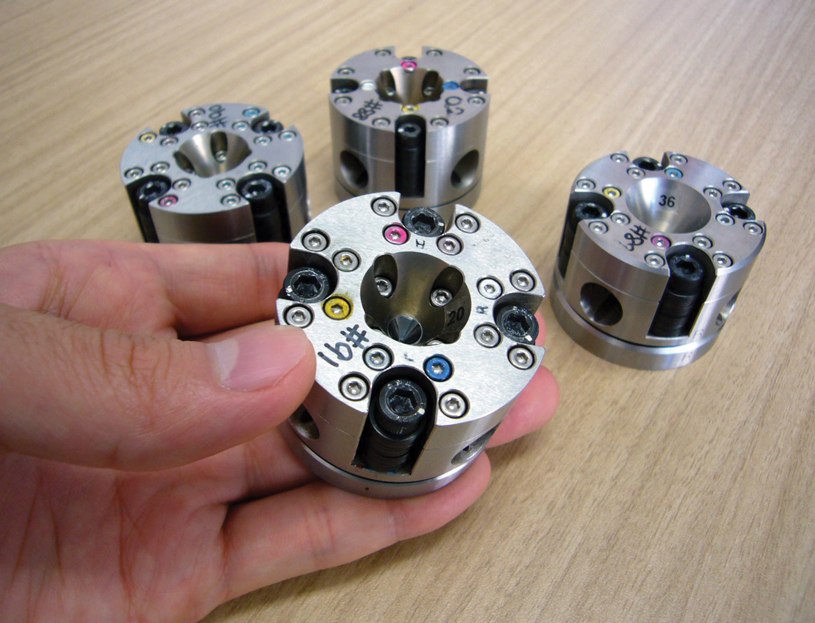The motion of the Earth’s mantle is controlled in part by how mantle minerals respond to changes in temperature and pressure. The chemical and physical shifts that minerals undergo as they are heated and squeezed cause some to sink down toward the core and others to rise up toward the surface. This buoyant pressure and gravitational sinking, in turn, affect the convection of the mantle and the large-scale cycling of the Earth.
In the lower mantle, starting around 650 kilometers depth, the most common minerals are silicon oxides that include iron, magnesium, or calcium. The proportion of iron, magnesium, or calcium bound up in the mineral affects its density. At the same time, the chemical structure of the mineral also changes with pressure and temperature. The result is that researchers are not really sure how these minerals behave in the mantle.
Using a combination of a diamond anvil press and laser heating, Tateno et al. measured how these common minerals changed under the conditions found in the lower mantle. They tested pressures from 34 to 179 gigapascals and temperatures from 2900 to 5000 Kelvin.
The authors found that as the pressure increases and the mineral starts to melt, at around 34 gigapascals, it changes to preferentially include more iron and magnesium. This change causes its density to increase. With a high proportion of iron and magnesium, the partial melt is actually denser than the original solid, and the melt sinks farther toward the core.
The proportion of iron and magnesium in the authors’ samples increased with pressure up to around 80 gigapascals before leveling off. This pressure is roughly equivalent to a depth of 2000 kilometers below the Earth’s surface. (Journal of Geophysical Research: Solid Earth, doi:10.1002/2013JB010616, 2014)
—Colin Schultz, Writer
© 2014. American Geophysical Union. All rights reserved.
© 2014. American Geophysical Union. All rights reserved.

